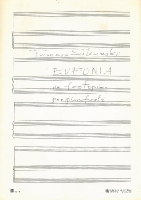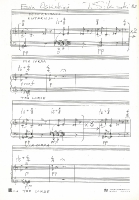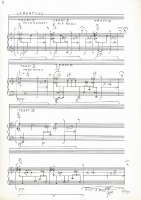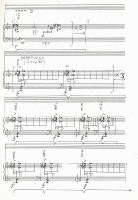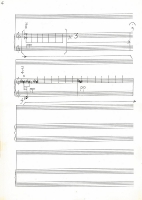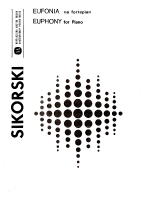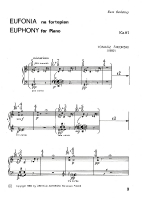Euphony for piano (1982)
Euphony was written in 1982. Yet it was not premiered until four years later, when it was performed on 10 March 1986 during a concert in Alicante by the pianist Ewa Osińska, to whom it was dedicated. In Poland the work was premiered in the same year at the Warsaw Autumn Festival. On that occasion it was presented by Szábolcs Esztényi.
The piece comprises five short sections, quasi-miniatures, described by the composer in Italian:
- misterioso – mysteriously
- lamentoso – plaintively
- impetuoso – impetuously
- gioioso – joyfully
- esaltato – ecstatically
In Euphony the composer continues his attempts to create more elaborate structures and use more varied musical material, maintaining at the same time the inner cohesion and clear logic of the work. Like in the case of Hymnos, Sikorski uses here small-sized modules, transformations of which drive the creation of the work’s form. However, the form itself is very different. Hymnos is a single-movement composition, with modules appearing irregularly in it. In Euphony, on the other hand, the modules are introduced in successive sections of the piece: module I in misterioso, module II in lamentoso, module III in impetuoso, module IV and V in gioioso , and module VI in esaltato. Each module appears at the beginning of each section (with the exception of gioioso, where module V is introduced in the course of the section, with module IV appearing at the beginning) and is transformed only within that section.
Successive modules are linked by a subtle thread, which is mostly harmonic, but also melodic and expressive. Of great importance in module I are the notes E, C and D flat, making up a kind of “tonal centre” and a clearly discernible melody. Module II is based on a similar rhythmic pattern and a falling minor third – D sharp (E flat)-C – which testifies to its melodic similarity to module I. In lamentoso module II is “tonally” expanded, a transformation that leads to the chord-based, pulsating module III. That part is also marked by the omnipresence of the note E flat. In the last two bars of this section the pulse slows down (from quavers to crotchets) and new material is introduced, defining a new “tonal centre” for the giocoso section and modules IV and V that appear there. The last module, number VI, is linked to the preceding module by the same rhythmic pattern (short value–long value).
Transformations of modules over limited sections enabled the composer to significantly expand the scopes of the procedures he used. Without any new pattern being introduced, the listener constantly refers to the preceding one. Particularly interesting in this respect is lamentoso. A simple pattern (module) is atomised here completely so much so that what remains of it is one, short note, though it also expands to seven- or even nine-note phrase.
In expanding the modules the composer uses, for example:
- melodic groups of two or three semiquavers with the F sharp-C tritone,
- repetitions of the first note of a given form of the module at its end (together with the note C from the semiquaver group, it produces an impression of symmetry),
- various harmonic bases of modules (E1, D, B2, B and D-E flat combination),
- melodic transformations and thickening of the texture by the application of chords.
It must be noted that playing the entire module with the pedal pressed results in each note becoming a harmonic, i.e. any change in the pitch and number of notes also leads to qualitative changes in the module’s harmony.
However, not all modules undergo such complex transformations. Impetuoso contains just two harmonic bases of the module (with the exception of the last two, modulating bars); what changes is only the number of repetitions of the E flat–E flat1 octave. In gioioso, in turn, module V undergoes just quantitative rhythmic changes, while module IV is not transformed at all.
